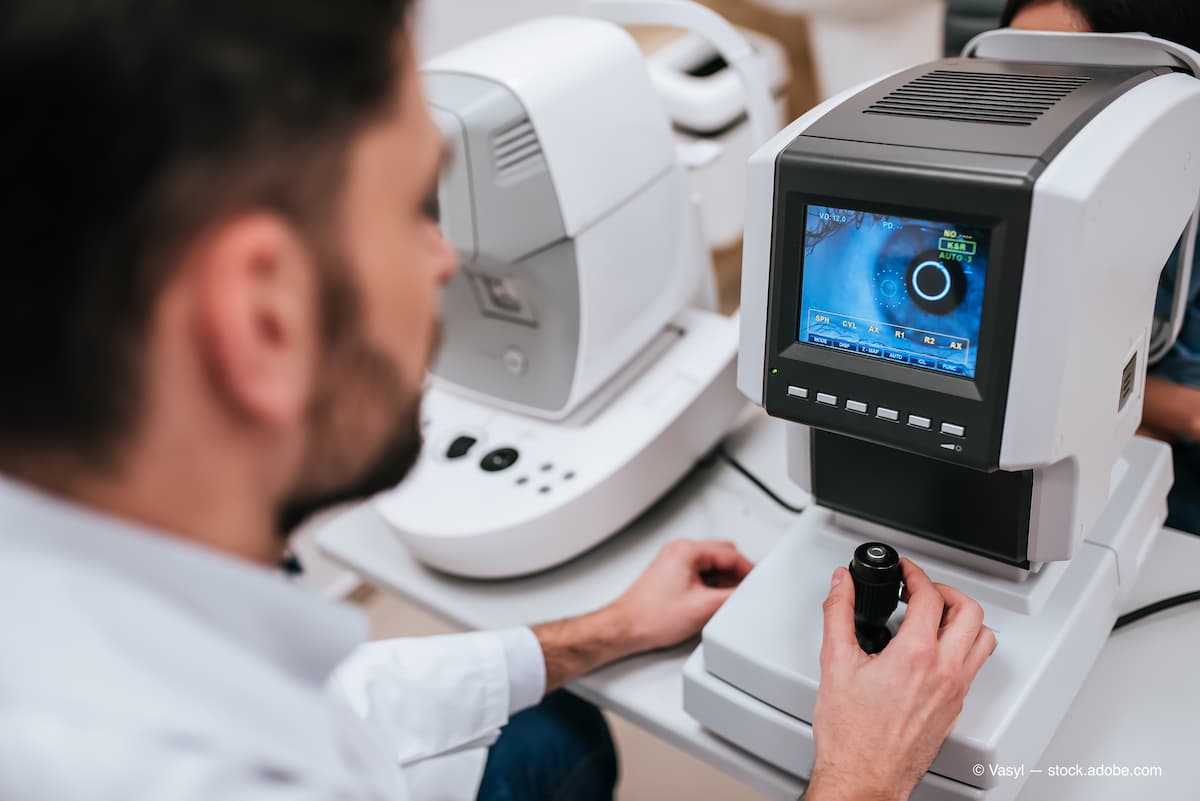Treating glaucoma: a complex puzzle
Michael Chaglasian, OD, Illinois College of Optometry, Chicago, and Eric Schmidt, OD, Omni Eye Specialists, Wilmington, NC, share guidelines for ODs on diagnosing glaucoma during the 2022 Vision Expo West in Las Vegas.
Michael Chaglasian, OD, Illinois College of Optometry, Chicago, and Eric Schmidt, OD, Omni Eye Specialists, Wilmington, NC, provided guidelines for optometrists to diagnose glaucoma correctly.
The key is knowing a patient’s risk factors, they emphasized.

In clinical practice, identifying these patients begins with a risk factor assessment that includes the family history of glaucoma and the presence of diabetes and systemic hypertension.
Familial contribution
Primary open-angle glaucoma is a multifactorial polygenetic disease, Chaglasian and Schmidt explained. The risk of glaucoma in an 80-year-old patient is about 10 times greater for patients with relatives who have glaucoma.
While obtaining the family history is important, new research and developments in genetic testing for glaucoma will hopefully lead to a commercially available in-office test that collects DNA via a cheek swab. Laboratory results of the test would then give the clinician and patient a risk score analysis for the likelihood of developing glaucoma in the future. Despite this propensity, other factors unrelated to genetics are strongly associated with glaucoma development.
Diabetic component
The presence of diabetes is associated with roughly a 1.35 times greater risk, from a meta-analysis of many population-based studies. While not a strong risk factor for open-angle glaucoma, some of the major studies have suggested that diabetes is a risk factor for glaucoma progression in those who already have the disease.
Elevated systemic pressure
Glaucoma is not linked to high blood pressure (BP), and elevated levels may be protective against glaucoma. Low BP is a factor in ocular perfusion pressure, and the glaucoma risk increases when the ocular perfusion pressure is below 50 to 55 mmHg.
Likewise, cardiovascular disease is not a typical risk factor for glaucoma.
Clinicians should be aware that rosuvastatin (Crestor, AstraZeneca), a statin, increased the risk of development of open-angle glaucoma in a few early studies. Other statins are not involved in the onset of glaucoma.
When to treat
This is not as simple as treating everyone with an intraocular pressure (IOP) over 21 mmHg. Treatment is postponed in patients considered low risk until there is evidence of glaucomatous damage on optical coherence tomography images or in visual field testing.
In patients with significant risk factors, clinicians may decide to treat early, before any structural or functional changes develop.
The quandary can be sorted out by categorizing those who should be treated as those with a positive family history and elevated IOP; those who should not be treated as those with normal imaging and a younger age; and those with mixed findings of a suspicious optic nerve, central corneal thickness of 570 microns, and those with unreliable visual fields.
In patients with suspected glaucoma with IOPs ranging from 21 to 30 mmHg with normal-appearing or suspicious optic nerves but no definitive changes, i.e., visual field defects, and some risk factors, clinicians are advised to follow the Ocular Hypertension Treatment study guidelines as follows: high-risk patients are those with IOP over 22 mmHg and a central corneal thickness less than 555 microns. These ocular hypertensive patients should generally receive topical medication for a 25% to 30% reduction in IOP.
Among patients with IOPs below 21 mmHg, treatment decisions vary by patients. Clinicians are advised to follow patients every 3 to 6 months and repeat imaging, visual fields, and IOP measurement. Another option may be to start treatment for patients with 3 or more risk factors: a cup-to-disc ratio of 0.8 or greater with asymmetric optic nerve heads, African-American heritage, diabetes, and questionable field defects and fluctuating IOP values.
Treatment is generally required in those with ocular hypertension and an IOP exceeding 30 mmHg, and an exception would be those with a central corneal thickness well over 600 microns. Of course, any patient with glaucomatous optic nerve changes; very abnormal characteristic and reliable OCT images, with characteristics for glaucoma; and confirmed visual loss should be treated.
“Glaucoma diagnosis can be complex, and an organized step-by-step approach is best,” Chaglasian and Schmidt emphasized.